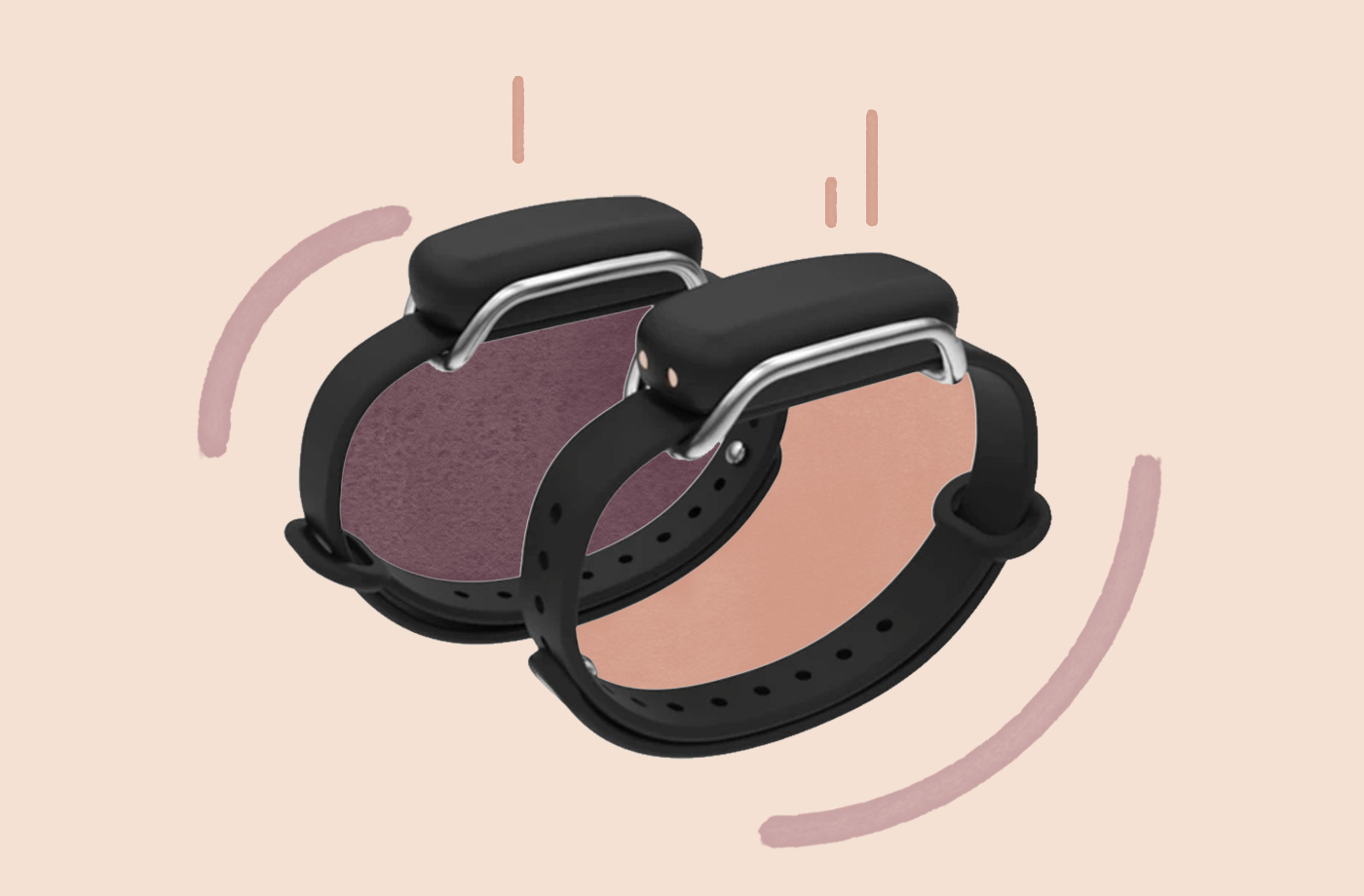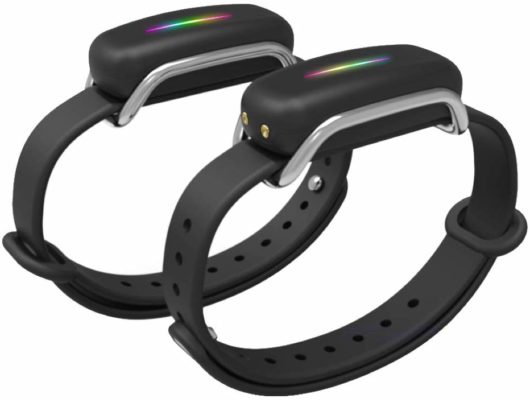
March 04, 2020 at 02:00PM by CWC
It’s Sunday night, and yet again I’m FaceTiming with my boyfriend (let’s call him, Joe) who resides 1,000 miles west of New York City, where I live. We’ve been doing the whole long-distance dance for a few months now, and while grateful that technological advancements have let us stay in contact to this extent, we could, well, use some extra help in terms of bridging the physical space between us using alternate methods. Enter: Bond Touch bracelets ($98 for a pair), the wearables that “mimic your partner’s touch” via mutually exchanged vibrations that you can exchange from anywhere in the great, wide world (using cell service or Wi-Fi, that is).
“I can just tap the bracelet and your wrist will vibrate,” I tell Joe. “Isn’t that cool?!” The good sport he is, he agrees to at least try it out to humor me. So I order a pair and give him his during a recent weekend visit. We connect our two bracelets via the Bond Touch app and choose our digital color (which you can change at any time). The bracelet then registers my full tapping pattern and sends an exact copy to his, so decide to make up a language—our very own Morse code of sorts—for our vibrational combos. Here’s what we decide:
One tap: “Hi!,” “hello!,” or some equivalent greeting
Two taps: “Good morning” or “good night”—depending on when the tap comes in
ADVERTISEMENT
ADVERTISEMENTKate Spade Autumn/Winter Sale |
Three taps: “I love you.”
Four taps: “I’m ready to leave!” (This one has is reserved for when we’re actually together and find ourselves at a party-slash-social-gathering and we’re ready to GTFO.)
Five taps or more: Something major happened, and I feel the need to tap a bajillion times. In reality, the wearable only lets you go up to 10—we checked.
Shop now: Bond Touch bracelets, $98
To wake up the band, all you have to do is double-tap the screen until it flashes your chosen color. Then you enter your message and watch it disappear into the ether—only to reappear on your partner’s wrist. Since we first use our bracelets at the beginning of a long weekend that we’ll spend side by side before he flies away again, we’re able to test the accessory in close proximity before asking it to go the distance. And we quickly learn that it’s quite fun to use: After we set it up the bracelets, we spend nearly an hour passing pulses back and forth—even when we could just tap each other’s wrists IRL.
While we continue to use the bracelets this way throughout the weekend, it’s ironically the pulses we send when we’re not alone that feel the most intimate—like when we’re grabbing drinks with my friends, or when we’re playing Cards Against Humanity at a house party. There’s something comforting and, yeah, a little bit sexy, about getting a little pulse that says “I’m thinking of you” even when both of you are lending an ear to someone else.
Within a minute of his car pulling away at the end of our weekend together, I get a three-tap pulse. In the moment, I totally feel sad, but I also feel more connected to him than I would have as a result of him sending a simple “I miss you” text. Something about the physicality involved with receiving a vibration reminds me that we’ll be close again soon.
“When real physical touch isn’t available, haptics have been shown in research to restore at least some of that calm.” —Aimee Daramus, PsyD
Clinical psychologist Aimee Daramus, PsyD, posits that while limited research has been conducted on haptic touch—the way electronics can reactively mimic a sense of connective touch—physical touch itself tends to increase trust and boost intimacy in any relationship. “If this is also true with haptic touch, then you’re reminding the other person that you value the intimate relationship between the two of you,” she says.
The shared language component of using Bond Touch bracelets contributes to that sense of togetherness, especially when we’re miles apart. “Most other parts of the relationship can be done over the phone or messaging if you absolutely have to, like talking about how your day went. You can see them physically with video calling. Touch, though, is tough to replicate,” Dr. Daramus says.
Okay, not so surprising that Bond Touch bracelets are a poor replacement for skin-to-skin contact, but in my own limited experience, much of what being long-distance requires is simply accepting that (for the time being), this is how things are and you need to make the best of it.
ADVERTISEMENT
ADVERTISEMENTSports Direct Free Delivery on All Orders! |
And in their own way, the Bond Touch bracelets—and the particular way my boyfriend and I use them—do replicate the situation of having someone place a hand on your arm or brush their fingers against yours. When I woke up today, for example, Joe sent a synaptic “Good morning!” that did admittedly make my heart flutter. “Unwanted touch can spike the fight-or-flight response, but welcomed touch can help calm stress down,” says Dr. Daramus. “So when real physical touch isn’t available, haptics have been shown in research to restore at least some of that calm.”
A week after Joe leaves, I find myself at a Galentine’s dinner with my best friend—and I wouldn’t have had it any other way. We’ve celebrated this way for many years before I knew Joe, and it’s a tradition at this point. But a new component of this year is that as we ate our pasta and drank red wine, my wrist buzzed with I-love-you pulses and I tapped three notes in return. Digitally and physically, I gratefully got to spend Valentine’s Day with the people I love.
While we’re on the topic of L-O-V-E, here’s how to make sure trust issues don’t sour your relationship. And what to do if your marriage is lacking sex.
Author Kells McPhillips | Well and Good
Selected by CWC

ADVERTISEMENT
ADVERTISEMENTUp to 30% off Gift Sets |








